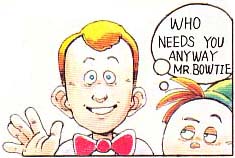Nintendo Power, a landmark publication near and dear to the childhoods of millions, has officially ceased production and is officially a "Mommy, what's a Nintendo Power?" product. The magazine's current publishers, Future US, are cutting ties with Nintendo, apparently due to the larger company being "difficult to work with." Really? Nintendo? Nooooooo. Yeah, I get it. It's hard enough just being a consumer. But since it's really once-and-for-all the end, you know what time it is. It's time to take inventory and tally up all the memories Nintendo Power has given us over the last 24 years. Warning: this was bittersweet to write, and it'll be bittersweet to read.
I own a spotless mint copy of the first Nintendo Power, and I'm using someone else's scan here because it's not the kind of spine I want to flatten over glass. Most copies of Issue 1 went into the hands of destructive children, and are now dog-eared and worn. Somehow the one I found escaped that fate. They knew how to reel you in. There was no Internet in the form we're familiar with, and that first issue contained all the info you needed to get into the Second Quest of Zelda, the Infinite 1-Up trick in Super Mario Bros. and an entire map for Metroid. About half the people they sent it to for free wanted to know more. Being the first issue, there was also a quirk or two that was never repeated, such as a two-page-spread drawing of Super Mario Bros. 2 characters training for the Seoul Olympics. We wouldn't see anything that bizarre again. But we'd see plenty of things MORE bizarre.
Normally, sophomore follow-ups don't gain as much attention, but the second issue of NP is famous in its own right for sporting their most infamous cover: a man dressed as Simon Belmont holding Dracula's severed head. If you look closer, there's a scary face hidden on the right side, and the raw heart of a cow on the left. You have to wonder what they were thinking for what was regarded as a "kids" magazine at the time.
Words cannot describe how bad this "mini-novel" is that NP tried serializing back when the mag was in single digits. Through an accident involving coffee, a nervous crush on a co-worker, and a pile of "Napajese microchips," an average Seattle-dwelling Nintendo worker is transformed into the superhero Captain Nintendo, and must battle Mother Brain and other dastardly villains that escaped through the TV in the same accident. If it sounds vaguely familiar, it's because Nintendo used Captain Nintendo as a character in the early days of its 900 tipline, and later on revised it into the legendary Captain N, the Game Master. Not only can the whole story be read online, but some insider information from the author can be found as well. Unsurprisingly, he wasn't pleased with the way it turned out. The biggest problem he had was that Captain Nintendo's love interest was butchered from his original vision under editor edits. In retaliation he named the character "Tara Bates," deliberately giving her the same last name as the star of Hitchcock's "Psycho." Before you start feeling sorry for him, he still believes his original story was genius and that Captain N was a piece of rubbish for doing things like "making him a kid" and "giving him a dog." He also thought the show, like the story, should have taken place in the Nintendo offices, because office dramas work on Saturday Morning. If it had been up to this guy, the exact same thing published in NP would have been made a cartoon.
Actually, the magazine said they were "Tetrisized," which is the word they invented to promote the game. Nintendo's marketing department invented a lot of words, such as "ACM Graphics," "Morphmation" and "Funtography," but none of them ever realy caught on. They pushed "Game Pak" for 15 years and everybody still said "Cartridge," or in more rustic circles, "Game Tape." This is classic NP at its most adorable. Howard and Nester have become Tetrads due to their obsession with Tetris and show readers the best strategies for playing it. The Tetris adventure was one of many special inserts NP stapled into its pages during one of two brief periods they didn't use glue binding. Howard Phillips recently revealed he still has the models of himself and Nester used for the article. THIS Appeared on the back cover of "Super Mario Bros. 2 Inside-Out," a special insert in the DuckTales issue. Validates the whole existence of the mag itself, doesn't it?
I consider this to be the greatest players' guide ever written. I've never seen a better one. The book is just bursting with secrets and tips on every page, for every level. A lot of hard work and insider information obviously went into it, and the best part is that it does the job it's supposed to. After you read the Super Mario 3 Player's Guide, you WILL play the game better. Compare this to most players' guides that just exist to cash a check.
Though Nintendo and Rare weren't joined at the hip just yet, the former already owned a lot of stock in the latter, and so it was worth their while to promote Rare's new "Battletoads" game as heavily as possible. Do they ever! In a feat that wouldn't be repeated, nearly half the book is taken up by Battletoads maps, strategies, and space-filling comic book interruptions between levels. And with a game like Battletoads, you really needed the help! NINTENDO POWER'S TV AD I really can't add anything to this.
Not only does this issue contain a large spread on Super Mario World -- the hottest game ever at the time -- but maps for Final Fantasy Adventure, one of my favorite games ever, and an interview with Bart Simpson. It's a nostalgia overload!
NP ran a lot of comics throughout its history, but when you ask veterans of the mag what their favorite one was, it's usually a toss-up between either the Link to the Past or the Mario comics that ran through 1992. If you want my opinion, the Mario cartoon edges out the Link one and is the most memorable comic NP ever ran. The comic is drawn and timed like a Bob Clampett Warner Bros. cartoon, with wild superdeformed takes and comic pratfalls. It really works for this kind of world (or at least better than other attempts to comic-ify it have). One of the most classic gags is when Mario steps into a room, bellows "IT'S A PIPE-O-RAMA!" -- and his face goes in the opposite direction and turns into a hyper-detailed Japanese man's. I see more artists using this kind of gag now, but in 1992 that kind of visual was hysterically fresh. Also, this comic has the best Peach ever. In stark contrast to how she's been written in every game, this Peach is fiery, wiry and take-charge. There is one point where she catapults herself from the ceiling foot-first and roundhouse-kicks Goombas across the room. There is an entire chapter where Mario is captured instead and Peach must rescue him, and she does so easily. And then there's Friendly Floyd, the pushy salesman who only appears in this comic yet has gathered a following solely from it.
For a time, Nintendo Power's review section had only two reviewers: George and Rob. And instead of separating the reviews like every other magazine, the review section was one long conversation between George and Rob about what they thought of that month's new releases. It was a very different way of doing things, and proved to be so unpopular with the readers that it was dropped quickly. Siskel and Ebert worked the same way, so I don't see what the problem is.
Every January for as long as Nintendo self-published the magazine, they would stuff that year's issue with extra content for subscribers only. Sometimes it would be built into the mag and sometimes the mag would arrive in a bag with the extra content printed separately. Typical Subscriber Bonuses would involve a roundup of the best codes and cheats of the previous year, a list of the best games released in the last twelve months, some stickers meant to fit around your game controller, and maybe a paper Star Fox Arwing you could punch out and assemble. Later Bonus issues would give aging readers something a little more concrete like an exclusive Miyamoto interview or the first announcement of an upcoming game. One of the last and most excellent Bonuses was 2003's CD of live orchestrated Super Smash Bros. Melee medleys. That was the only Bonus given that year, but many subscribed just to get it.
In the fall of 1994 Nintendo sent out a videotape in a leafy box to everyone on their mailing list: "Donkey Kong Country Exposed." I already wrote about four of these pretty thoroughly: DKC, Star Fox 64, Diddy Kong Racing and a DK64/Jet Force Gemini combo video were all mailed to NP subscribers. But some also got VHSes promoting Pokemon, Banjo-Kazooie and a 1996 video hyping the new N64.
The Super Power Supplies catalog came with NP once every three months. Those who had it were privy to exclusive items like game soundtrack CDs, figurines of various Nintendo and Rare characters, and an alternate Ocarina of Time version of the Game Boy Camera. They cost money, but they were much better than the cheapo bonuses Club Nintendo dishes out, and a lot of them are now worth major eBay bucks.
This one I am picking for reasons only significant to myself, but I think there are others out there who'd agree. This is the issue that published the first screens of Super Mario 64. I recanted a very long time ago (good luck reading that layout) how I'd never seen anything like it and that I stared at those shots for hours, in class. The Nintendo Ultra 64 seemed like such an impossible, magical thing back then.
The loudest debate that had ever erupted in NP's letter column was started by one Sarah LaBrie of Egan, Minnesota, who wondered why there weren't better female role models in games. Or any half-decent female characters in games, period. This was before Lara Croft introduced a new wave of female protagonists. Readers wrote back and forth for at least a year on the subject, some agreeing with her, others pointing out Samus Aran and Terra from FFIII.
The hundredth issue, released in September 1997, was one of the most memorable, enjoyable and well-put-together NPs ever created. Photos and scans of many classic moments, early previews of games at least a year away (like "Conker's Quest"), a list of the top 100 games for Nintendo systems, 100 of the most classic cheat codes, the return of Nester and so much more. It helped that for the N64, there was little in the way of new gaming news to report on.
The first time "Pocket Monsters" was mentioned in NP may have been the first time it was mentioned in North America. The magazine was reporting on the first two games way, way before Western pop culture would know of their existence. Of course they had a financial reason to invest early, and right before the first two games came out in September 1998, NP did something they hadn't done in a long time: a supplemental tear-out bonus issue. The six issues of Pokemon Power included in NP from August 1998 through January 1999 featured several pages of strategy (when they were all assembled, their content equaled the separate strategy guide Nintendo also put out), two pages of fanart, and a "comic" made out of TV show screenshots. This comic came out months before the show did and things like the Team Rocket motto made their US debuts here.
I have two copies of this: one from the newsstand and one through the mail that I never took out of its plastic bag. My instincts were correct, as I've demolished the newsstand copy through overreading and this particular issue is a collectible one. No other issue perfectly captures that moment in time when everybody finally got to explore Hyrule at eye level. In addition to lots of Zelda hype there's also a feature introducing the Game Boy Color and the divisive Turok 2. There's also a Superman 64 poster.
NP staff member Alan Averill was camera shy. A Subscriber Bonus issue featured a woodcut of Abraham Lincoln in place of his face, and in a later issue, a stuffed Slime of "Dragon Quest" fame took his place in a photo. He unexpectedly got a large volume of response to it ("Alan is soooo cute!") and the opposite effect took place, making Alan the most famous staff member for several years. From that point the magazine acted as if Alan was literally the plush Slime, showing it in photos interviewing industry leaders. They even published a photo of the plush Alan sitting on Miyamoto's head, and I really wanted THAT to be the image shown here, but I couldn't find the issue it was in. I swear it happened, though. Alan left the staff shortly before the magazine switched from an internal Nintendo product to a third-party publication of Future Inc.
NP's longest sponsor ran their first ad in the magazine in 1999 and continued to hock their products sporadically until the very end. Their ads would look progressively more embarrassing and Bowie-esque as the years went on. FANART
Finally, one of the things I've always supported Nintendo Power for doing is calling special attention to overlooked video games that needed it. Even in the early 90's when they were heavily controlled by Nintendo they were doing it, writing an extra three-part story-like article on Secret of Mana months after the title's release. There was an entire section in the mid-90's, "Epic Center," devoted to evangelizing the joys of JRPGs to a pre-FFVII America. Later on the editors would lobby hard for Gunstar Super Heroes, Radiant Historia, Phoenix Wright and the Zero Escape series. Faithful to the end, their second-to-last issue actually has Shantae on the cover. It's the month the Wii U is released, and they don't pick New Super Mario U, ZombiU or any of the PS3/360 ports....they pick Shantae. I'm gonna miss you guys. |
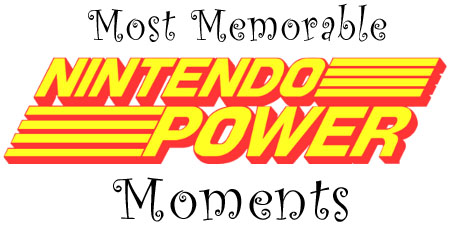
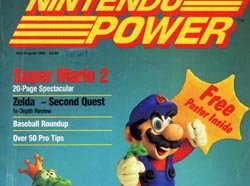 THE FIRST ISSUE
THE FIRST ISSUE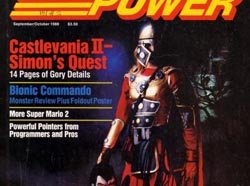 THE SECOND ISSUE
THE SECOND ISSUE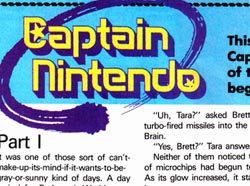 CAPTAIN NINTENDO NARRATIVE
CAPTAIN NINTENDO NARRATIVE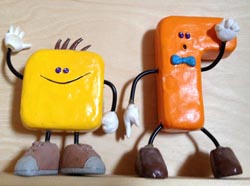 HOWARD AND NESTER BECOME
TETRIS PIECES
HOWARD AND NESTER BECOME
TETRIS PIECES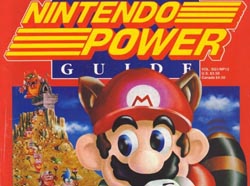 SUPER MARIO 3 PLAYER'S GUIDE
SUPER MARIO 3 PLAYER'S GUIDE THE BATTLETOADS ISSUE
THE BATTLETOADS ISSUE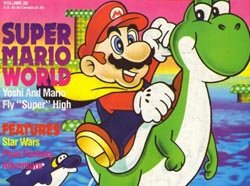 THE SUPER MARIO WORLD ISSUE
THE SUPER MARIO WORLD ISSUE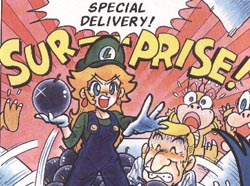 SUPER MARIO ADVENTURES
SUPER MARIO ADVENTURES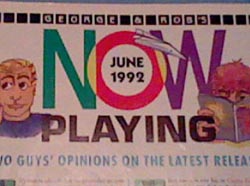 GEORGE AND ROB
GEORGE AND ROB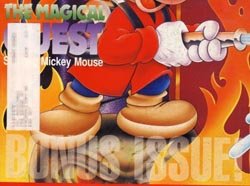 SUBSCRIBER BONUS ISSUES
SUBSCRIBER BONUS ISSUES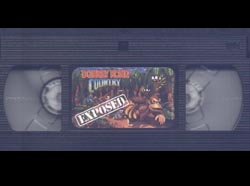 SUBSCRIBER BONUS VIDEOS
SUBSCRIBER BONUS VIDEOS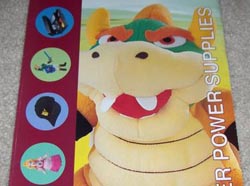 SUBSCRIBER BONUS SWAG
SUBSCRIBER BONUS SWAG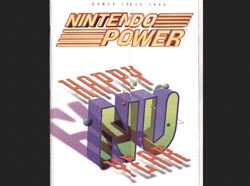 ISSUE #80
ISSUE #80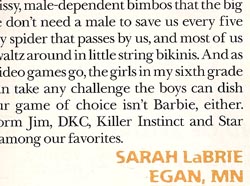 SARAH LABRIE
SARAH LABRIE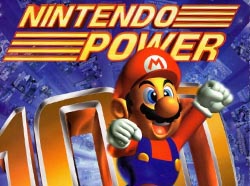 THE HUNDREDTH ISSUE
THE HUNDREDTH ISSUE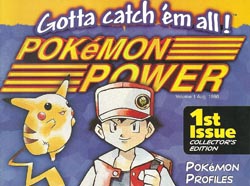 POKEMON POWER
POKEMON POWER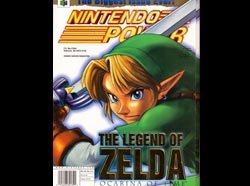 THE OCARINA OF TIME ISSUE
THE OCARINA OF TIME ISSUE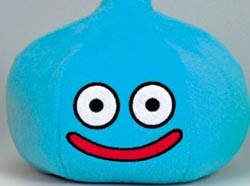 ALAN
ALAN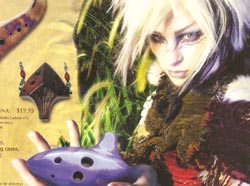 SONGBIRD OCARINAS
SONGBIRD OCARINAS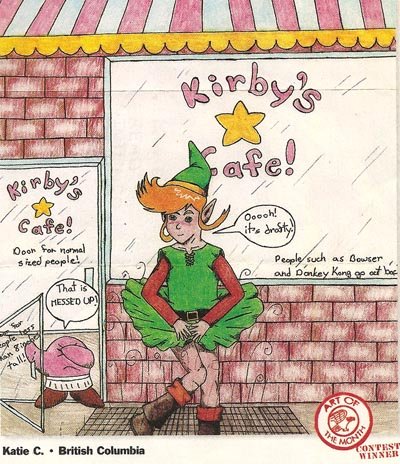
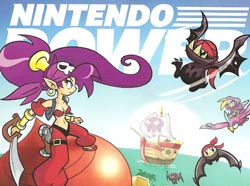 ROOTING FOR THE UNDERDOGS
ROOTING FOR THE UNDERDOGS